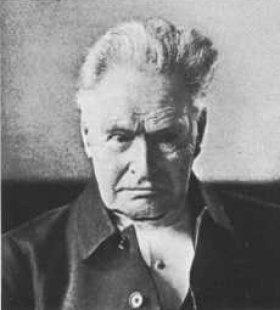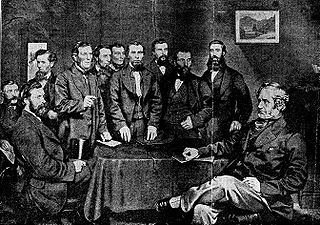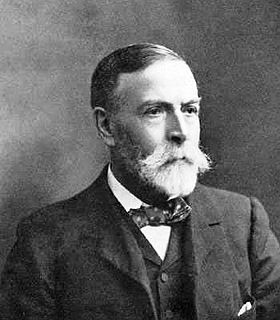
Earl of Longford is a title that has been created twice in the Peerage of Ireland.

Earl Grey is a title in the peerage of the United Kingdom. It was created in 1806 for General Charles Grey, 1st Baron Grey. In 1801, he was given the title Baron Grey of Howick in the County of Northumberland, and in 1806 he was created Viscount Howick in the County of Northumberland, at the same time as he was given the earldom. A member of the prominent Grey family of Northumberland, Earl Grey was the third son of Sir Henry Grey, 1st Baronet of Howick.

Duke of Bedford is a title that has been created six times in the Peerage of England. The first and second creations came in 1414 and 1433 respectively, in favour of Henry IV's third son, John, who later served as regent of France. He was made Earl of Kendal at the same time and was made Earl of Richmond later the same year. The titles became extinct on his death in 1435. The third creation came in 1470 in favour of George Neville, nephew of Warwick the Kingmaker. He was deprived of the title by Act of Parliament in 1478. The fourth creation came 1478 in favour of George, the third son of Edward IV. He died the following year at the age of two. The fifth creation came in 1485 in favour of Jasper Tudor, half-brother of Henry VI and uncle of Henry VII. He had already been created Earl of Pembroke in 1452. However, as he was a Lancastrian, his title was forfeited between 1461 and 1485 during the predominance of the House of York. He regained the earldom in 1485 when his nephew Henry VII came to the throne and was elevated to the dukedom the same year. He had no legitimate children and the titles became extinct on his death in 1495.

Baron Byron, of Rochdale in the County Palatine of Lancaster, is a title in the Peerage of England. It was created in 1643 by letters patent for Sir John Byron, a Cavalier general and former Member of Parliament. The peerage was created with remainder to the heirs male of his body, failing, to his six brothers: Richard, William, Thomas, Robert, Gilbert, and Philip, and the heirs male of their bodies. Lord Byron died childless and was succeeded according to the special remainder by his next eldest brother Richard, the second Baron.

Earl of Wharncliffe, in the West Riding of the County of York, is a title in the Peerage of the United Kingdom.

Viscount Bangor, of Castle Ward, in the County Down, is a title in the Peerage of Ireland.

Baron Grimthorpe, of Grimthorpe in the East Riding of the County of York, is a title in the Peerage of the United Kingdom. It was created on 17 February 1886 for the lawyer and architect Edmund Beckett, 1st Baron Grimthorpe, 5th Baronet, with remainder to the heirs male of his father. He was succeeded according to the special remainder by his nephew, the second Baron. He had earlier represented Grimsby in Parliament. As of 2014 the titles are held by the latter's great-grandson, the fifth Baron, who succeeded his father in 2003.
Baron Gainford, of Headlam in the County Palatine of Durham, is a title in the Peerage of the United Kingdom. It was created on 3 January 1917 for the Liberal politician Jack Pease, a member of the Darlington Pease family. He notably served as President of the Board of Education from 1911 to 1915. Pease was the second son of Sir Joseph Pease, 1st Baronet, and the grandson of Joseph Pease, while Arthur Pease was his uncle and Sir Arthur Pease, 1st Baronet, Beaumont Pease, 1st Baron Wardington, and Herbert Pease, 1st Baron Daryngton, were his first cousins. The third baron was a former member of the London County Council and of the Greater London Council. As of 2013 the title is held by his younger brother, the fourth baron, an architect and town planner; County Planning Officer for Ross and Cromarty 1967–1975 and Scottish Office Inquiry Reporter 1978–1993.
Baron Joicey, of Chester-le-Street in the County of Durham, is a title in the Peerage of the United Kingdom. It was created in 1906 for the coal mining magnate and former Liberal Member of Parliament for Chester-le-Street, Sir James Joicey, 1st Baronet. He had already been created a baronet, of Longhirst and of Ulgham, both in the County of Northumberland, in the Baronetage of the United Kingdom in 1893. He was succeeded by his eldest son, the second Baron. He was High Sheriff of County Durham in 1910. The second baron lost his son young, and on his death his younger brother succeeded to the barony. The third Baron was an army officer, whose elder son died in WWII without male issue, and he was thus succeeded by his younger son, the fourth baron. As of 2010 the titles are held by the latter's eldest son, the fifth Baron, who succeeded in 1993.

Baron Abinger, of Abinger in the County of Surrey and of the City of Norwich, is a title in the Peerage of the United Kingdom. It was created on 12 January 1835 for the prominent lawyer and politician Sir James Scarlett, the Lord Chief Baron of the Exchequer. Lord Abinger was succeeded by his eldest son, the second Baron. He represented Norwich and Horsham in the House of Commons. He was succeeded by his son, the third Baron. He was a lieutenant-general in the army and fought in the Crimean War. On the death of his son, the fourth Baron, the line of the eldest son of the first Baron failed. The late Baron was succeeded by his second cousin, the fifth Baron. He was the grandson of Hon. Peter Campbell Scarlett, third son of the first Baron. When he died the title passed to his younger brother, the sixth Baron, and then to another brother, the seventh Baron. As of 2016 the title is held by the latter's grandson, the ninth Baron, who succeeded his father in 2002.
Baron Acton, of Aldenham in the County of Shropshire, is a title in the Peerage of the United Kingdom. It was created on 11 December 1869 for Sir John Dalberg-Acton, 8th Baronet, a prominent historian and Liberal Member of Parliament.

Baron Sandhurst, of Sandhurst in the County of Berkshire, is a title in the Peerage of the United Kingdom. It was created on 28 March 1871 for the soldier Sir William Mansfield, Commander-in-Chief of India between 1865 and 1870 and Commander-in-Chief of Ireland between 1870 and 1875. He was the grandson of Sir James Mansfield, Solicitor-General and Chief Justice of the Common Pleas. Lord Sandhurst's eldest son, the second Baron, was a Liberal politician and also served as Governor of Bombay. On 1 January 1917 he was created Viscount Sandhurst, of Sandhurst in the County of Berkshire, in the Peerage of the United Kingdom. However, he had no surviving male issue and on his death in 1921 the viscountcy became extinct. He was succeeded in the barony by his younger brother, the third Baron. As of 2021 the title is held by the latter's great-grandson, the sixth Baron, who succeeded his father in 2002. He is a barrister and judge and was elected to a hereditary-peers' seat in the House of Lords in 2021.

Baron Shuttleworth, of Gawthorpe in the County Palatine of Lancaster, is a title in the Peerage of the United Kingdom. It was created on 15 July 1902 for the Liberal politician Sir Ughtred Kay-Shuttleworth, 2nd Baronet. Both his sons were killed in the First World War and he was therefore succeeded by his grandson, the second Baron. However, both he and his brother, the third Baron, were killed in action during the Second World War. On the death of the third Baron in 1942 the titles passed to his first cousin, the fourth Baron, who survived the Second World War although he was badly wounded. As of 2017 the titles are held by the latter's son, the fifth Baron, who succeeded in 1975. He has been Lord Lieutenant of Lancashire since 1997.

Baron Penrhyn is a title that has been created twice. The first creation came in the Peerage of Ireland in 1783 in favour of Richard Pennant, who had previously served as a Member of Parliament for Petersfield and Liverpool. This creation became extinct on his death in 1808. The next creation came in 1866 in the Peerage of the United Kingdom when the Conservative politician Edward Douglas-Pennant was created Baron Penrhyn, of Llandegai in the County of Carnarvon. He had previously represented Carnarvon in the House of Commons and also served as Lord Lieutenant of Caernarvonshire. He was granted the estate of his father-in-law on the condition that he accepted his wife's maiden name, Pennant. Lord Penrhyn was the younger brother of The 17th Earl of Morton. In 1833 he had married Juliana Isabella Mary Pennant, eldest daughter and co-heiress of George Hay Dawkins-Pennant of Penrhyn Castle and in 1841 he assumed by Royal licence the additional surname of Pennant.

Baron Borwick, of Hawkshead in the County of Lancaster, is a title in the Peerage of the United Kingdom. It was created on 20 July 1922 for the businessman Sir Robert Borwick, 1st Baronet. He was chairman of George Borwick & Sons Ltd, manufacturers of baking and custard powders. The company had been founded by his father George Borwick. Before his elevation to the peerage, Borwick had been created a baronet, of Eden Lacy in the Parish of Lazonby in the County of Cumberland, on 1 July 1916. His eldest son, the second Baron, was succeeded by his younger brother, the third Baron. The latter was succeeded by his son, the fourth Baron. As of 2014 the titles are held by his nephew, the fifth Baron, who succeeded in 2007. Lord Borwick is the eldest son of the Hon. Robin Borwick, third son of the third Baron. The family tomb is maintained at the Cimetières du Château in Nice.

Baron Tollemache, of Helmingham Hall near Ipswich in the County of Suffolk, is a title in the Peerage of the United Kingdom. The Tollemache family's surname and the title of the barony is pronounced TOL-mash.
Baron Terrington, of Huddersfield in the County of York, is a title in the Peerage of the United Kingdom. It was created in 1918 for the former Liberal Member of Parliament for Huddersfield, Sir James Woodhouse, Kt. He was succeeded by his eldest son, the second Baron. His wife Vera Woodhouse, Lady Terrington, was one of the first female Members of Parliament. She represented Wycombe as a Liberal from 1923 to 1924. On the second Baron's death the titles passed to his younger brother, the third Baron. He notably served as a Deputy Speaker and Deputy Chairman of Committees in the House of Lords. His son, the fourth Baron, was also Deputy Chairman of Committees in the House of Lords. He had no sons and was succeeded by his younger brother, the fifth Baron. Known as Monty Woodhouse, he was a Conservative politician and an expert on Greek affairs. As of 2016 the titles are held by his eldest son, the sixth Baron, who succeeded in 2001. He is a urologist.

Baron Leconfield, of Leconfield in the East Riding of the County of York, is a title in the Peerage of the United Kingdom. It was created in 1859 for Col. George Wyndham (1787–1869). He was the eldest illegitimate son and adopted heir of George Wyndham, 3rd Earl of Egremont (1751–1837), from whom he inherited Petworth House in Sussex, Egremont Castle and Cockermouth Castle in Cumbria and Leconfield Castle in Yorkshire, all formerly lands of Josceline Percy, 11th Earl of Northumberland (1644–1670), inherited by Charles Seymour, 6th Duke of Somerset (1662–1748) on his marriage to the Percy heiress Elizabeth Percy (1667–1722) and inherited as one of the co-heirs of his son Algernon Seymour, 7th Duke of Somerset, 1st Earl of Egremont (1684–1750) by the latter's nephew Sir Charles Wyndham, 4th Baronet (1710–1763) of Orchard Wyndham in Somerset, who inherited by special remainder the Earldom of Egremont. The 1st Baron's eldest son, the second Baron, represented West Sussex in the House of Commons as a Conservative. He was succeeded by his eldest son, the third Baron, who served as Lord Lieutenant of Sussex from 1917 to 1949. The latter's nephew, the sixth Baron, served as Private Secretary to Prime Minister Harold Macmillan from 1957 to 1963. In 1963, four years before he succeeded his father in the barony of Leconfield, the Egremont title held by his ancestors was revived when he was raised to the peerage as Baron Egremont, of Petworth in the County of Sussex. As of 2017 the titles are held by his son, the seventh Baron. Known as Max Egremont, he is a biographer and novelist.

Oswald Partington, 2nd Baron Doverdale was a Liberal Party politician in the United Kingdom.

Edward Partington, 1st Baron Doverdale was an English industrialist.












